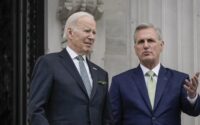BOJ policymaker warns of fragile recovery, signals sustained low rates
Passersby wearing protective face masks walk on the street at Shibuya shopping and amusement district, amid the coronavirus disease (COVID-19) pandemic, in Tokyo, Japan July 28, 2022. REUTERS/Issei Kato
TOKYO, Aug 31 (Reuters) – Bank of Japan board member Junko Nakagawa on Wednesday warned of risks to the country’s fragile economy such as the chance of rising living costs hurting household spending, highlighting the need to keep monetary policy ultra-loose for the time being.
With the fallout from the COVID-19 pandemic fading, however, the BOJ will discuss at next month’s meeting whether to make any tweaks to its dovish policy guidance, she said.
While the weak yen have boosted manufacturers’ profits, supply disruptions caused by China’s strict COVID-19 lockdowns have hurt Japanese exports and output, Nakagawa said.
Register now for FREE unlimited access to Reuters.com
Domestic consumption is picking up as the pandemic’s impact subsides, though the fallout from a broad range of price hikes for daily necessities clouds the outlook, she said.
“For the economy to recover, it’s crucial that the damage to consumption from price rises remains minimum,” Nakagawa said in a speech to business leaders.
“It’s true there is uncertainty over our basic scenario projecting a moderate increase in consumption,” backed by a tight job market and rising household income,” she said.
While inflation exceeded the BOJ’s 2% target for several months, that alone would not be enough to withdraw stimulus, Nakagawa said.
“We must continue with monetary easing to sustainably and stably achieve our inflation target, backed by a positive cycle accompanied by wage growth,” she said.
The BOJ has kept policy ultra-loose to support a fragile economic recovery, remaining an outlier among a host of central banks raising rates to combat soaring inflation.
And the central bank’s forward guidance has remained dovish, pledging to keep rates at “current or lower levels,” and to ramp up stimulus as needed with an eye on the pandemic’s impact.
At the Sept. 21-22 meeting, the BOJ will decide whether to end as scheduled a pandemic-relief loan programme expiring in end-September.
Some analysts believe the BOJ could tweak its forward guidance and remove reference to the pandemic’s fallout, if it were to end the loan programme.
Nakagawa said the fate of the loan programme wasn’t directly tied to the BOJ’s decision on whether to tweak forward guidance.
“Up till now, we’ve maintained an accomodative bias in our policy guidance. What to do with the language is something we will discuss at the September meeting, taking into account economic and price developments at the time,” she said.
Japan’s core consumer prices rose 2.4% in July from a year earlier, marking the fastest pace in seven-and-a-half years, driven by fuel and raw material prices. read more
Register now for FREE unlimited access to Reuters.com
Reporting by Leika Kihara; Editing by Tom Hogue & Simon Cameron-Moore
Our Standards: The Thomson Reuters Trust Principles.
[ad_2]
Source link


